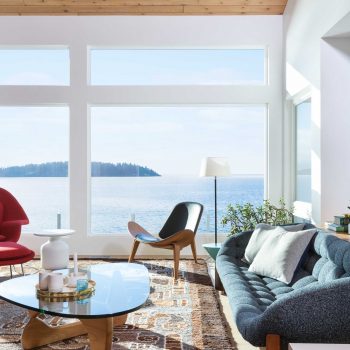http://www.dmh.org.il/default.aspx
http://www.ronarad.co.uk/architecture/
“The primary goals of Design Museum Holon are to inspire and challenge the design community and the general public’s perception of design and the way it affects their lives.”
There is so much to say about the architecture of DMH it is difficult to know where to start. The mesmerising form in combination with Corten steel is all encompassing and moves this building into the exclusive realm of epochal global architecture.
Notoriously Eero Saarinen was one of the first architects to use Corten steel when he designed the John Deere World Headquarters in Moline, Illinois in 1964. Although he died before it was finished the supposed “rusty finish” was required because the company Director wanted a “down-to-earth” look to accompany the image of agricultural machinery.
Because of the copper chromium components in the steel, Corten has a greater resistance to weathering than conventional unalloyed steel. The chemicals in the steel enable a protective layer of rust when exposed to the elements – this layer protects the steel from further rusting. Additionally the oxides that appear on the surface contribute to the rich and unique colour it becomes over time.
However, Ron Arad’s decision to use Corten steel is a demonstration of the immense creativity employed in the evolution of this magnificent icon. For example, each band has received a unique chemical treatment, so that respectively the bands differ a little in terms of colour increasing the sculptural distinction of each as well as indicating to the visitor the interior level they are on at any one time. Additionally, rainfall affects the coiling Corten surfaces adventitiously; Ron Arad likens the result to a “living landscape”.
“The topographic horizontality of the bands is further emphasised by a gradation of treated patinas and the subsequent weathering of the steel over the lifetime of the building, both of which echo the familiar geological striations of the Israeli desert.” Architecture Daily: https://goo.gl/F5mgCT
The bands of Corten in the forms used represent an aesthetic paean to the use of unusual materials in the name of architecture. Corten is known for its brilliance and the dynamic nature of the surface. When put to use with the “loose” circular forms the structure becomes a one-off public sculpture which will never be imagined in this form again. It is as if gymnast’s ribbons have been caught swirling on the breeze – the curving bands are visually delicate when compared to the overall scale of the structure and the surrounding landscape.
They can be perceived lyrically; taken with the individual patinas of each coil, they also have poetic qualities. The poetic aspect is enhanced by the varying shadows cast by the bands as the sun moves from east to west during the day. At all times the shadows will be compelling and at times they will be so compelling the experience of viewing will seem like nothing one would ever have the opportunity to glimpse. The bands alone are such a beautiful idea because once again the whole experience will be so much greater than the sum of the parts.
It goes without saying that the form and material the structure is possessed of had to be best practice; the first national Design Centre in Holon Israel had to be monumental and avant garde; a powerful symbol of progressive design. After all it is there because of the innate belief that design is one of the foundations of a progressive culture, just as architecture is.
The Museum symbolises the importance of culture to Israel as well as the importance of design and architecture as a form of expression within that culture. Therefore Ron Arad had to approach the project intellectually. The form had to arrest global sensibility; it had to meet the challenge of global scrutiny and it had to effortlessly take its place within the global canon of architecture and design. The architecture had to stand out physically, symbolically and practically. It needed to embrace the 21st century in terms of design or it would have lacked credibility from the outset and it would never attain that credibility.
Separate circulating bands imply a self-sustaining system made up of constituent parts, all feeding into a central idea or position. Viewed symbolically, this idea equates to nurturing the spirit of design, knowing the importance of design to the community, how design changes lives for the better (think Bauhaus ideals and results), as well as demonstrating how design is the great enabler. Additionally the circulatory bands suggest journeying: a fitting metaphor for the experimental stage of design through to the effect of great design on the population. Think of the initial concept of flight well over a hundred years ago and the manner in which flight has changed the face of cultures throughout the 20th and into the 21st century; the impact globally would be almost immeasurable. By definition many third world countries will rely on design in the 21st century to improve the lives and lifestyles of their populations.
Practically, it is a building that needs no upkeep; it is both a self-sustaining structure, as well as occupying its own paradigm. There are many great and enduring constructions of the 20th and 21st century: Corbusier’s Sainte Marie de la Tourette; the Barcelona Pavillion by Mies van der Rohe, the National Assembly Building in Dhaka Bangladesh by Louis Kahn; these architectures were far ahead of their time when built; they will endure irrespective because their singularity and prescient ideas places them outside conventional architecture. While there are many more, the DMH is part of the same exclusive club; a stand alone sculptural architecture, never to be repeated.
Design Museum Holon represents a font of future journeys; aesthetic, symbolic and literal. To see this magnificent building in reality is a journey well worth taking, irrespective.





















